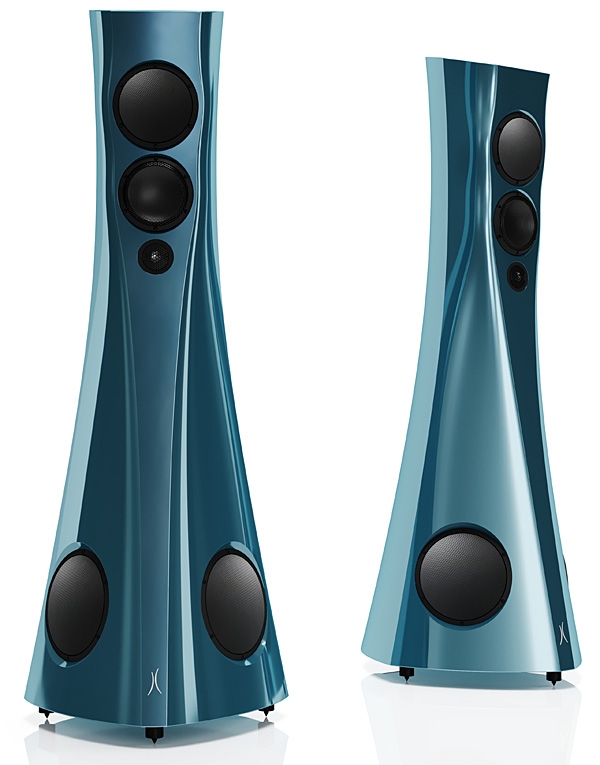Assuming that's a linear SPL measurement, 116 dB of 10 Hz at 1 metre in 1988 is crazy impressive

Kinda hard to describe. The subs are insanely powerful and very deep in response. They're a high order bandpass design with 3x 21" B&C 21SW152 in each box. The group delay is relatively low compared to other bandpass boxes, and they took the full output of a Powersoft K20 DSP without a sweat. We used to run three drivers per amplifier, which is about 4000 W peak per driver when you take into account the measured electrical impedance of the cabinet.
The 'kick' section I was less enamoured with. All four 15" per box share a smaller rear chamber, lined with damping material. It's a simple straight horn with an offset loading at the throat from there, one horn per driver. The issue we found is that the drivers were subjected to immense pressure from the sub response, which was directly below. Essentially, the 15" cones would meet their excursion limit much earlier than you'd expect due to the high output of the lower frequencies, which the horn didn't load correctly.
With 16 of those 15" drivers per system, it was very costly when they ripped apart... eventually I found a sweet spot in crossover slopes and limiters that stopped this, but it took some of the joy and impressiveness out of the system in that region. Running the subs up higher to compensate only brought the issue back, while also increasing the onset of thermal compression in the subs themselves - subs build up the heat more quickly driving higher frequencies due to the reduced excursion causing less heat exchange via the ports.
This is something they fixed in the later Nexus Q box, which uses a cardioid port at the rear, but it never made it back to this Incubus Hyperfold.
The full-range element sounded really good outdoors. It was a nightmare to set up, at 150 kg with the bracket we had made. Most of the time, we used either a telehandler forklift or a series of steps made out of steel staging to lift it up on the 2.5 m stack. I think that section could also do with a revision, as the polar response seemed to be quite inconsistent from the 100 Hz to 20 kHz region. No problem outdoors, but the issue with what appeared to be diffraction from the simple arced array of straight line array waveguides, and the opposite orientation of the LF dual 12" bifurcated horns caused some unpredictable problems when we took the system into venues.
The nominal dispersion on the spec sheet doesn't feel right to me, and I think it's based on some predictions. In practice, it's quite a wide coverage both vertically and horizontally. Certainly not conical, but broad in both dimensions. So the output is obscene, but it doesn't 'throw' very far because the DI is low. For 2000 or so people, on a square-ish dancefloor, it's really damn good. For a long rectangular one, delays are needed after ~ 20-30 metres as the bass is still going *very* strong but the highs not so much.
That's never been properly measured though because frankly, it's not really feasible to mount something that huge and heavy on a robot arm to generate balloon data. There was a more conventional line array cabinet based on the same design in the works, which we did measure and deploy as part of a development process, but for various reasons it never made it to market and focus went onto a smaller product which became the (very good) Arcline 8.
Thing is, I can't grumble too much as it's an install system, and we asked to tour it. These issues can be mitigated in a venue that is likely to afford the system via treatment, aiming, and tuning. A great example of this is the utterly crazy Blitz club in Munich that has FOUR stacks of this system in a room for 500 people. It runs without limiters, has no HPF, and plays to 20 Hz with ease. They don't drive it to silly levels, even if it's capable, so the dynamic range is obscene. Not only that, they spent as much on the room as they did the system - it has custom-designed hybrid absorptive and diffusive treatment all down the walls, in the roof, a sprung floor, decoupled DJ booth, and more. Put it on the bucket list, if you're ever in the area!
As for us, we had a great run with the system despite my nitpicking. It made us a bunch of cash, a good name for doing crazy things in beautiful places, and my approach to tweaking and refining the processing and usage of the rig got us huge accolades from discerning producers who claimed it was the closest thing to a giant version of their studio monitors that they'd ever heard.
Edit: I've attached some photos from over the years.
View attachment 160969
View attachment 160970
View attachment 160971
View attachment 160972
View attachment 160973
View attachment 160974
View attachment 160975
While it was primarily used for DJs (the looks don't really make it fit many bands!) at the Arctic circle gig which is the island one in the pictures, I mixed a really great six-piece neo-classical band on it with great results. Super easy to dial in good sound for violin, cello, double bass, and vocals. Wish we had more chance for that, frankly.
Since then, however, we started using some Danley products. I got a pair of Jericho J1-94 from them on loan for a summer, and it was another level entirely - similar sonic qualities, but easier to drive and far more consistent coverage. They also have subs and full-range speakers that do similar things, in terms of frequency response, output level, and directivity, but at different scales that allow for more 'regular jobs' to benefit from the same goals. That also means I don't have to be on every gig or install to get great sound; my preset library just rolls out and the rest is intuitive for front of house guys to work with when it comes to applying EQ or aiming.
We now own a full warehouse of Danley, and our Void rental stock all moved into installations - where it was meant to be used anyway - or was sold onto people who continue to do good things with it. The silver Incubus system lives on the west coast of the USA now, with a great guy who runs a little shop called Specter Audio. He got it with a full rack of Powersoft X series, pre-loaded with my final tweaked presets, a bunch of 'how to' guides and all the clever cabling and distribution you need to send 16 channels of high power audio to each stack for maximum flexibility. I believe he covers Oregon and California mostly; you can find them on Instagram to look out for it in your area or I'm sure he'd be keen to demo the system at his warehouse.
Here's a shot of one of the gigs we do regularly now; this is a fireworks show with a 125 m x 125 m audience area, or 50,000 person capacity. We deploy a pair of Danley J3-94 per side flown at 10 m height, 50 m apart, with a pair of their SH96HO stacked on some subs for the middle front section. The system uses two 8-channel amplifiers, and we do it in a single van instead of the 40 ft truck the previous supplier used. At the back of the crowd, it's ~89 dBA slow.
View attachment 160977
If you look closely, you can see the white speaker horns on the towers and along the edge of the crowd. Forgive the music and phone video!
For all the joys of objective measurements and science, there's still a lot to be said for the experience of going to listen to crazy stuff



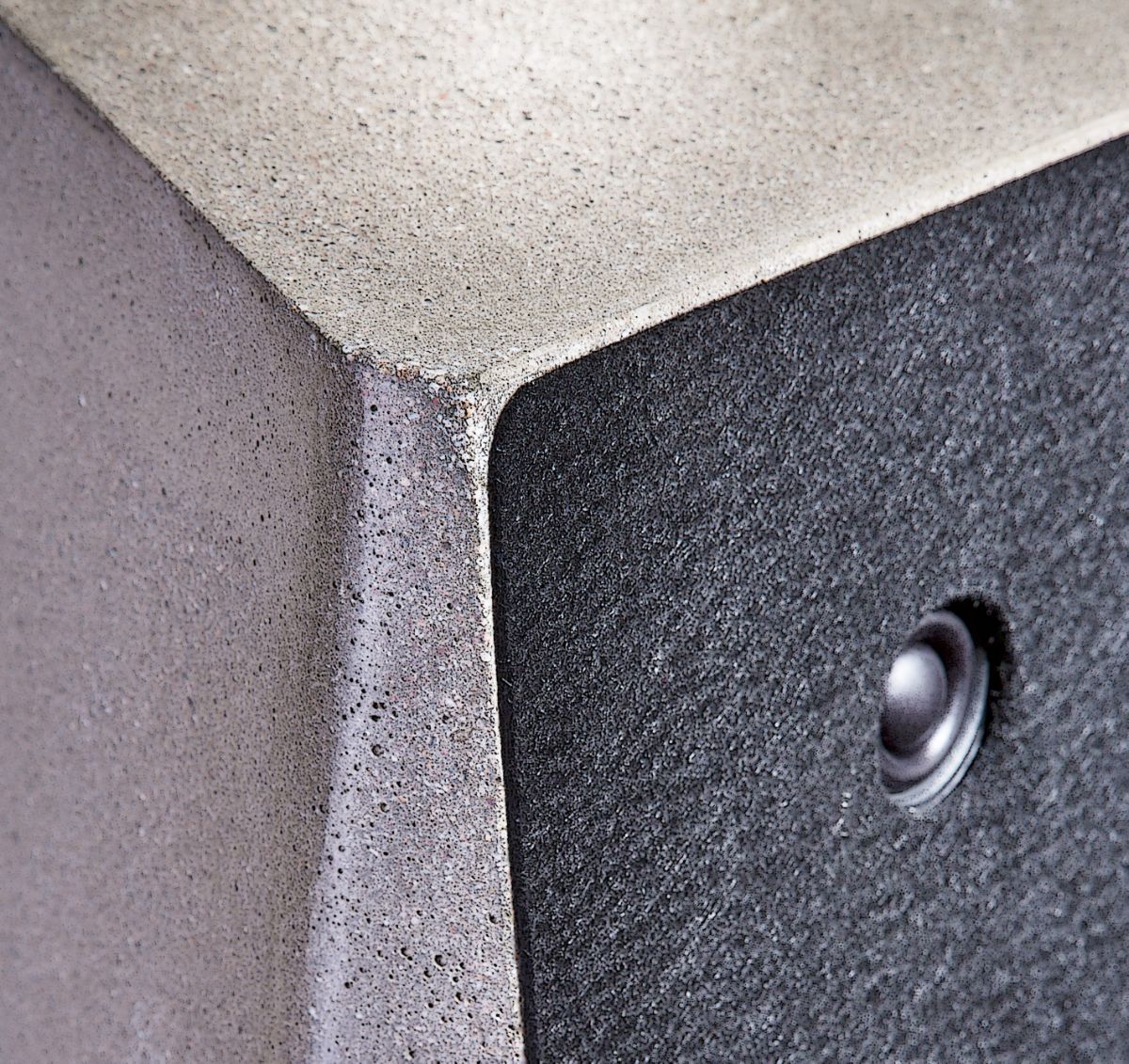
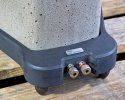
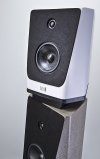
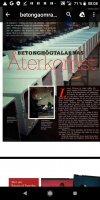
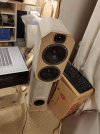
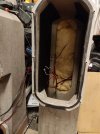
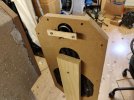
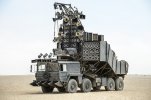
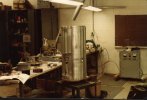
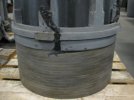
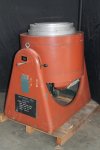

/cdn.vox-cdn.com/uploads/chorus_asset/file/13975058/408082main_fd10_full.1419968996.jpg)
